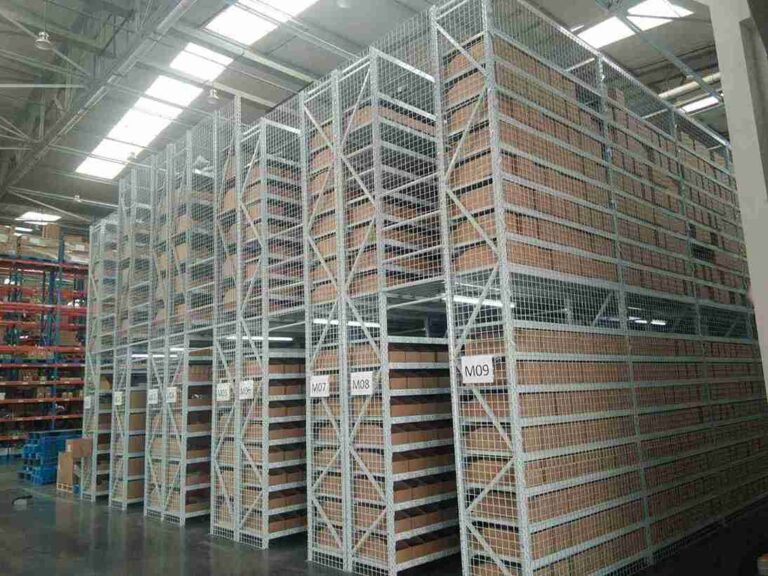📐 "First 50 Enterprise Queries Get Custom 3D Warehouse Design" Plan

Introduction: The Strategic Advantage of Narrow Aisle Logistics Optimization
In the competitive world of modern warehousing, businesses constantly seek ways to enhance storage capacity, reduce operational costs, and accelerate order fulfillment. One of the most transformative solutions available today is narrow aisle logistics optimization—a high-performance storage strategy that maximizes space utilization while streamlining material handling.
Unlike conventional wide-aisle racking systems, narrow aisle logistics optimization leverages specially designed racking configurations, advanced forklift technology, and intelligent warehouse planning to achieve unmatched efficiency. Companies implementing this approach often see 30-50% more storage capacity, faster picking speeds, and significant cost savings—making it a must-have strategy for distribution centers, e-commerce fulfillment hubs, and manufacturing warehouses.
This in-depth guide explores how narrow aisle logistics optimization works, its key benefits, implementation best practices, and real-world success stories—providing warehouse managers and logistics professionals with actionable insights to boost productivity and profitability.

H1: What is Narrow Aisle Logistics Optimization?
Narrow aisle logistics optimization is a warehouse storage methodology that minimizes aisle widths while maintaining full accessibility to inventory. By reducing aisle space from the traditional 3-4 meters down to 1.5-2.5 meters, businesses can dramatically increase storage density without sacrificing operational efficiency.
H2: Core Components of Narrow Aisle Logistics Optimization
- High-Density Racking Systems – Engineered for stability in tight spaces.
- Specialized Narrow Aisle Forklifts (NAFs) – Designed for precision maneuvering.
- Advanced Warehouse Management Systems (WMS) – Ensures optimal stock placement.
- Safety & Workflow Engineering – Minimizes bottlenecks and accidents.
H2: How It Compares to Traditional Warehousing
| Feature | Traditional Wide-Aisle | Narrow Aisle Logistics Optimization |
|---|---|---|
| Aisle Width | 3m+ | 1.5m-2.5m |
| Storage Density | Standard | Up to 50% higher |
| Forklift Requirements | Standard counterbalance | Narrow aisle reach trucks |
| Operational Speed | Moderate | Faster picking & put-away |
H1: The Business Case for Narrow Aisle Logistics Optimization
H2: 1. Unmatched Space Utilization & Cost Savings
One of the biggest challenges in warehousing is maximizing storage without expanding real estate. Narrow aisle logistics optimization solves this by:
- Reducing wasted aisle space by up to 40%.
- Allowing taller racking configurations (up to 14m high).
- Lowering facility costs (smaller footprint = lower rent/construction expenses).
Case Study: A European retail distributor implemented narrow aisle logistics optimization and increased pallet capacity by 45% within the same warehouse, avoiding a $2M expansion project.
H2: 2. Faster Order Fulfillment & Improved Throughput
In e-commerce and just-in-time manufacturing, speed is everything. Narrow aisle logistics optimization enhances workflow by:
- Shortening travel distances for forklifts.
- Reducing congestion in picking lanes.
- Enabling batch picking for faster order processing.
Data Point: Companies using narrow aisle logistics optimization report 20-30% faster order cycle times compared to traditional setups.
H2: 3. Enhanced Inventory Control & Accuracy
Misplaced stock leads to delays, overstocking, and lost sales. With narrow aisle logistics optimization, warehouses benefit from:
- Direct access to every pallet (no blind spots).
- Seamless integration with WMS & RFID tracking.
- Better stock rotation (FIFO/LIFO compliance).
H1: Implementing Narrow Aisle Logistics Optimization: A Step-by-Step Guide
H2: Step 1: Warehouse Assessment & Space Planning
Before installation, businesses must:
- Conduct a 3D laser scan of the facility.
- Analyze SKU velocity (fast vs. slow-moving items).
- Simulate forklift paths to prevent bottlenecks.
H2: Step 2: Selecting the Right Racking & Equipment
Not all narrow aisle logistics optimization systems are the same. Key considerations include:
- Racking Type: Selective vs. double-deep vs. drive-in.
- Forklift Compatibility: Turret trucks vs. articulated reach trucks.
- Automation Readiness: AGVs (Automated Guided Vehicles) for future scalability.
H2: Step 3: Safety & Training Protocols
Narrow aisles require strict safety measures:
- Anti-collapse racking beams for seismic stability.
- Blue safety lighting to guide operators.
- Certified operator training programs to minimize accidents.
H1: Real-World Success Stories in Narrow Aisle Logistics Optimization
H2: Case Study 1: Automotive Supplier Cuts Costs by 28%
A global auto parts manufacturer transitioned to narrow aisle logistics optimization, achieving:
- 42% more pallet positions.
- 22% faster inventory turnover.
- ROI in under 18 months.
H2: Case Study 2: E-Commerce Giant Doubles Storage Capacity
A leading online retailer implemented narrow aisle logistics optimization and:
- Reduced picking time by 35%.
- Handled 50% more daily orders without expansion.
H1: The Future of Narrow Aisle Logistics Optimization
H2: Trend 1: AI-Driven Warehouse Optimization
- Machine learning algorithms predicting optimal stock placement.
- Dynamic aisle adjustments based on real-time demand.
H2: Trend 2: Green Warehousing Initiatives
- Solar-powered narrow aisle forklifts.
- Energy-efficient LED aisle lighting.
H1: Conclusion – Why Every Warehouse Needs Narrow Aisle Logistics Optimization
Narrow aisle logistics optimization isn’t just a storage solution—it’s a competitive necessity. Companies adopting this strategy gain:
✅ Higher storage density (more revenue per square foot).
✅ Faster order processing (improved customer satisfaction).
✅ Lower operational costs (greater profitability).
For businesses serious about scaling efficiently, reducing waste, and future-proofing operations, narrow aisle logistics optimization is the smartest investment in modern warehousing.
H1: Frequently Asked Questions (FAQs)
H2: 1. How much does narrow aisle logistics optimization cost?
Costs vary based on racking type, forklift requirements, and warehouse size, but most businesses achieve ROI within 2 years due to space savings and efficiency gains.
H2: 2. Can narrow aisle logistics optimization work in small warehouses?
Absolutely—small and medium warehouses benefit the most from space maximization.
H2: 3. What’s the safest forklift for narrow aisle logistics optimization?
Articulating narrow aisle reach trucks offer the best maneuverability and load stability.
H2: 4. Does narrow aisle logistics optimization require warehouse redesign?
Not always—many systems can retrofit into existing layouts with minor adjustments.
H2: 5. How does automation integrate with narrow aisle logistics optimization?
Automated Storage & Retrieval Systems (AS/RS) and AGVs work seamlessly with optimized narrow aisle layouts.




